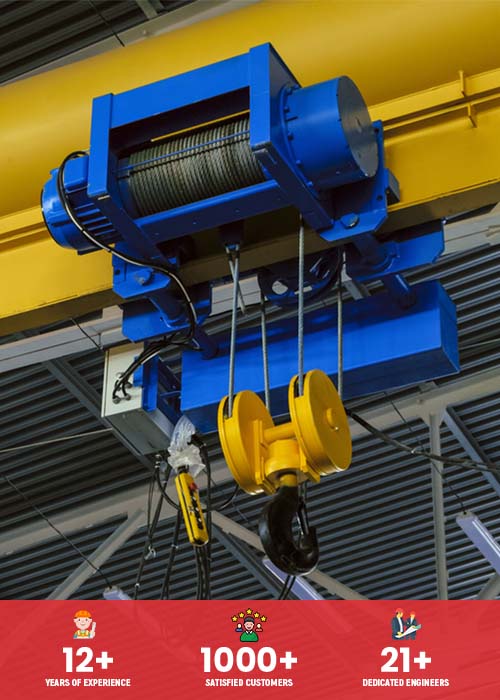Safety of Overhead Lifting Operation With Pre-Shift Hoist Inspections
It is crucial that the operator does a pre-shift hoist check before operating a wire rope, chain, or lever hoist for the first time throughout a shift or day. The Hoist crane manufacturers in India and across the world including Hoist Manufacturers Institute (HMI) advises these inspections to guarantee both the hoist’s correct operation and worker safety. Pre-shift hoist checks are ultimately what ensure the safety of an overhead lifting activity. We will discuss everything about Pre-Shift Hoist Inspections you ever wanted to know in this article.
Importance of Pre-Shift Hoist Inspections
Inspections of pre-shift hoists are crucial since hoists raise and lower massive items overhead. Personnel lives could be in danger if the hoist fails and the load falls from its suspended height. Additionally, a drop could harm the product being lifted, nearby machinery, and building structures. Productivity is also increased by regularly confirming that a hoist is in safe, suitable operational condition. This validation can prolong the hoist’s service life and lower the possibility of unscheduled downtime.
Codes and Industry Standards Call for Inspections
Pre-shift hoist inspections are required by a number of safety standards and regulations. The American Society of Mechanical Engineers (ASME), HMI, and the Occupational Safety and Health Administration (OSHA) are some of the sources. Relevant standards and codes are:
- New and modified cranes as well as hoists must undergo inspections in accordance with OSHA-CFR 29 Part 1910.179 for overhead and gantry cranes, to which hoists attach. This federal regulation mandates that inspections be conducted before use and on a regular basis by a certified, trained professional.
- Powerful underhung overhead hoists must have regular inspections performed by qualified and trained individuals, per ASME B30.16 Overhead Hoists (Underhung).
- Manually operated lever hoists must undergo routine inspections by qualified individuals who have received the necessary training, according to ASME B30.21 Lever Hoists.
- The visual inspection of slings and hooks used with hoists is covered in ASME B30.10 Hooks.
- Information and recommendations for inspecting overhead hoists can be found in HMI 100.24: Inspection and Maintenance Manual – Hoist.
- Best practices and suggestions for inspecting manually operated lever hoists are provided in HMI 100.74: Inspection and Maintenance Manual Lever Hoist.
Things to Look for During Pre-Shift Hoist Inspections
There are different areas to assess when performing a pre-shift hoist inspection and the person responsible for inspection must verify the below questions:
- Does the hoist have an out-of-service or out-of-order tag affixed to it?
- Are the hoist’s warning labels present and undamaged?
- Are all movements in line with the markers on the control device?
- Do the hook and latch function correctly, or are they broken or distorted?
- Is the wire rope kinked, damaged, or coiled incorrectly?
- Does the load chain not appear to be twisted, worn, stretched, or distorted?
- Are the hoist limit switches and travel limitations operating correctly?
- Does the hoist have any wear, abrasions, or weld splatters that would prevent it from working properly?
- When operating, does the hoist produce any odd noises?
- Are there any objects that could be dangerous in the operator’s or the hoist’s path or surrounding area?
Things every inspector must follow during Pre-Shift Hoist Inspections
Any criteria or areas for assessment suggested by the hoist’s manufacturer and those included in the equipment owner’s manual should be included in the pre-shift hoist inspection. Additionally, the operator needs to either electronically or on paper record the results of each pre-shift hoist inspection.
In order to verify that the procedures are being followed and to spot any problem regions or wear patterns, the facility should keep such records.



